Research Article
Issue Editorial Board
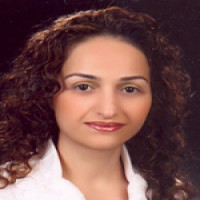
 0000-0002-1658-6515
0000-0002-1658-6515
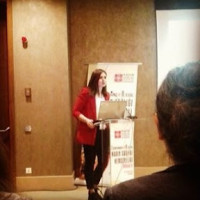
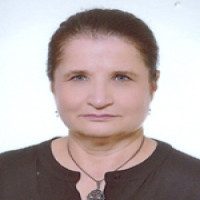
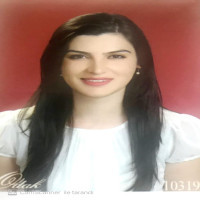
 0000-0002-2341-4391
0000-0002-2341-4391






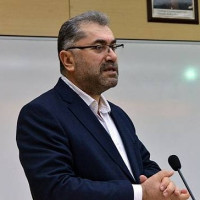

 0000-0003-4366-5056
0000-0003-4366-5056
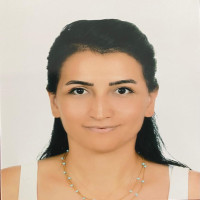
 0000-0002-5035-9906
0000-0002-5035-9906


 0000-0002-3271-453X
0000-0002-3271-453X

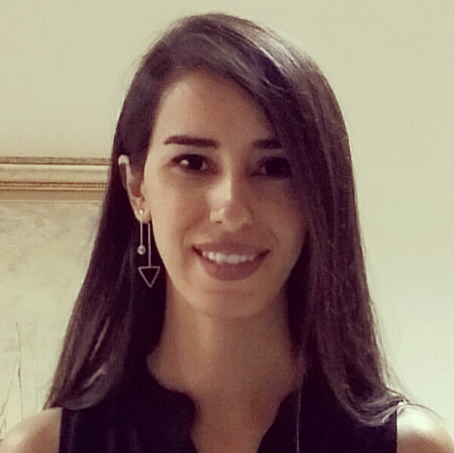



 0000-0003-1723-2038
0000-0003-1723-2038

Aim & Scope
Sakarya University Journal of Holistic Health includes scientific articles in the fields of nursing, midwifery, medical sciences, sports sciences, and health management. SAUHSD, an academic journal, aims to contribute to the knowledge in the field of health sciences by publishing studies of national and international scientific quality and value.
Life Sciences & Biomedicine: Anatomy & Morphology, Behavioral Sciences, Cardiovascular System & Cardiology, Critical Care Medicine, Dentistry, Oral Surgery & Medicine, Emergency Medicine, Endocrinology & Metabolism, Gastroenterology & Hepatology, General & Internal Medicine, Geriatrics & Gerontology, Health Care Sciences & Services, Infectious Diseases, Integrative & Complementary Medicine, Legal Medicine, Microbiology, Nursing, Nutrition & Dietetics, Oncology, Pediatrics, Psychiatry, Sport Sciences.
Library of Congress/LCC Subject Category: H, W (All Subcategories)
Author Guidelines
WRITING GUIDELINES FOR HOLISTIC HEALTH JOURNAL
General Rules and Formal Features
· Submitted manuscripts should not have been published anywhere else or accepted for publication anywhere else.
· The editors or reviewers can make any necessary corrections regarding spelling rules and provide feedback to the author.
· Submitted manuscripts cannot be altered except for corrections, which are returned for corrections by reviewers and editors.
· Submitted articles that do not meet the writing rules cannot be published.
· Submission and publication of articles in the journal are free of charge.
. The authors are solely responsible for the content of their publications.
· Articles should be written in Microsoft Word with in Cambria font and 11 point font.
• Section headings: Only the first letter of each word in the first heading should be capitalized. The first heading should be left-aligned and written in bold.
• Only the first letter of the first word in the second heading should be capitalized. All other words should be written in lowercase. The second heading should be left-aligned and written in bold.
• Only the first letter of the first word in the third heading should be capitalized. All other words should be written in lowercase. The third heading should be left-aligned and written in bold.
· Numbers between "1-9" should be written in writing, while those 10 and above should be written in Arabic. Separate decimal numbers with dots.
· The manuscript must include all of the following sections: Introduction, Methods, Results, Discussion, Conclusion, Suggestions, and References.
· Abbreviations should not be used in the title or abstract. Abbreviations in the text should be written clearly the first time they are used in the manuscript, and the abbreviated form should be given in parentheses right next to it.
* Articles should be edited and prepared by considering the explanations in the SAUHSD template file and using the journal template. Please click to access the draft.
Title Page
The authors' information should be presented on the title page. This page should include the article's title, the author's full name, affiliations, addresses, and contact information (email, telephone, fax). The title page should include a footnote if the submitted article is presented at the congress or symposium.
Abstract
The article's abstract section should be written in English, with a maximum of 250 words. This section should not contain abbreviations or references. Abstracts of research articles should contain sections describing the article's objective, methods, results, and conclusions. Review articles and case reports should be arranged to reflect the article's general content. Keywords should be written between 3 and 5 words under the abstract section. Commas (,) should be used to separate keywords. Keywords should comply with "Index Medicus: Medical Subject Heading (MeSH)" standards.
Main Text
Research articles in the main text section should consist of "Introduction, Method, Results, Discussion, Conclusion and Recommendations, References" sections, with bolding and capitalizing of the first letter of each heading. The number of words in this section (including references and tables) should be between 1500-4000.
The main text sections in review articles; consist of subject-related topics and references. Each heading should be written in bold (Bold). An article review should cover current literature in health-related fields. Authors who have published on that topic are preferred.
Main text section in case reports; should consist of "Introduction, Case Report, Discussion, References" headings. Titles (Introduction, Case Report, Discussion, References) should be written in capital letters, and bold characters, and subtitles should be written with only the first letter capitalized, bold, and left justified.
Code of Ethics
The Declaration of Helsinki must be followed in all research involving humans. Research must be conducted in accordance with ethical principles as indicated in the material and methods section of the article. It is the author's responsibility to ensure that the research complies with the ethical rules.
Figures, Pictures, Tables, and Graphics
All should be given in the main text, and each picture, table, and graphic should be numbered and referenced at the end of the sentence related to the places in the text.
In order to achieve clear printing, figures, images/photographs should be uploaded as separate .jpg or .gif files (pixel size approximately 500x400, 8 cm wide, and scanned at 300 resolution).
Limitations
The current limitations of the study should be given after the conclusion and recommendations section of the main text.
Article Information Form
Article information form should be written after the References.
Author(s) Notes: The author(s) would like to express their sincere thanks to the editor and the anonymous reviewers for their helpful comments and suggestions.
Author(s) Contributions: All authors contributed equally to the writing of this paper. All authors read and approved the final manuscript (The article has a single author. The author has read and approved the final manuscript).
Conflict of Interest Disclosure: No potential conflict of interest was declared by the author.
Copyright Statement: Authors own the copyright of their work published in the journal and their work is published under the CC BY-NC 4.0 license.
Supporting/Supporting Organizations: No grants were received from any public, private or non-profit organizations for this research.
Ethical Approval and Participant Consent: It is declared that during the preparation process of this study, scientific and ethical principles were followed and all the studies benefited from are stated in the bibliography.
Plagiarism Statement: This article has been scanned by iThenticate.
References
• All references cited in the text must be listed in the references section, and all references listed must be cited in the text.
• Authors should avoid using sources they have not accessed directly.
• Authors are responsible for the accuracy of the references. Conference papers, personal experiences, and unsupported internet addresses cannot be used as references.
In-Text Citation
References should be numbered sequentially in the text and shown in parentheses. When citing multiple references, separate them with a comma (e.g., 1,2). For more than two consecutive references, indicate the first and last reference numbers separated by a hyphen (e.g., 1-4).
Reference List
At the end of the text, references should be numbered sequentially as they appear in the text, under the heading "REFERENCES."
Authors are responsible for the accuracy of the references. Conference papers, personal experiences, and unsupported internet addresses cannot be used as references.
Journal names should be abbreviated as they appear in Index Medicus; if not listed in Index Medicus, the full journal name should be written out.
References should be formatted according to the Vancouver style. Attention should be paid to the following rules when writing references.
A sample notation for the References section is given below:
Article: Authors' surnames and names initials. Article title. Journal Name year; volume(issue) numbers.
Wellard SJ, Bethune E, Heggen K. Assessment of learning in contemporary nurse education: Do we need standardized examination for nurse registration? Nurse Educ Today. 2007;27(1):68-72.
Usta YY, Demir Y, Yönder M, Yildiz A. Nursing students' attitudes toward ageism in Turkey. Archives of Gerontology and Geriatrics. 2012; 54(1): 90-93.
Book:
Quinn FM. The principles and practice of nurse education. 3rd ed. Nelson Thornes Company; 2000. p. 687-750.
Book Chapter: Authors' surnames and names initials. Chapter title. Editors' names, book title, edition, city, publisher, year, and page numbers.
Melanie SM, Hickey JV. Neuroscience critical care. In: Hickey JV. editor. The clinical practice of neurological and neurosurgical nursing. 5th ed. Philadelphia: Lippincott Williams & Wilkins; 2003. p. 359-67.
Unpublished Thesis: Authors' surnames and names initials. Thesis title. Thesis type (Specialization, Doctorate, Master's) unpublished thesis, the institute where the thesis was presented, place, year, page number.
Özgül S. Maternal obesity's impact on maternal and neonatal health. Unpublished Master's Thesis, Adnan Menderes University Institute of Health Sciences, Aydın, 2016, 53.
Note: If the thesis has been published as an article, the article should be cited as the reference, not the thesis.
Electronic Journal:
Moulder JE. Electromagnetic Fields and Human Health. Electromagnetic Technology (Electronic Journal) 1999;6(3):17-28. http://www.mcw.edu.gcrc/cop/cell-phone-health-FAQ/toc.html. (Access date: March 23, 2017).
Electronic Report, Document:
World Health Organization. World alliance for patient safety forward program 2005. http://www.who.int/patientsafety/en/brochure_final.pdf (Access date: August 8, 2010).
Republic of Turkey Ministry of Health. Performance and Quality Directive in Healthcare. http://www.kalite.saglik.gov.tr/content/files/duyurular_2011/2011/14_subat_2012/1402yonerge.pdf (Access date: May 24, 2011).
Ethical Principles and Publication Policy
Ethical Principles and Publication Policy
The publication policy of the Sakarya University Journal of Holistic Health (SAUSHD) is based on the improvement and dissemination of information in an impartial and respectful manner. The processes applied in line with this policy directly affect the quality of the studies submitted by authors and affiliated institutions. Peer-reviewed studies support and materialize the scientific method. Therefore, all the parties taking part in the process (authors, readers, researchers, publishers, reviewers, editors) should comply with the ethical principles.SAUHSD, adheres to national and international standards in research and publication ethics. It complies with the Press Law, the Law on Intellectual and Artistic Works, and the Higher Education Institutions Scientific Research and Publication Ethics Directive. SAUHSD has adopted the International Ethical Publishing Principles published by the Committee on Publication Ethics (COPE), Directory of Open Access Journals (DOAJ), Open Access Scholarly Publishers Association (OASPA), and World Association of Medical Editors (WAME). It also undertakes to comply with the Decisions of the Turkey Editors' Workshop.
The Sakarya University Journal of Holistic Health expects all its parties to take on the following ethical responsibilities as part of the publication ethics.
The ethical duties and responsibilities listed below are based on the guidelines and policies published as open access by the Committee on Publication Ethics (COPE).
The publication of an article in a peer-reviewed journal is essential for the development of a coherent and respected knowledge network. Peer-reviewed articles support and develop scientific methods. Therefore, it is important for all relevant parties involved in the publishing process, including authors, journal editors, reviewers, and publishing agencies, to agree on the expected ethical behaviors and standards.
1. Ethical Principles
1. Authorship of the Paper:
Authorship should be limited to those who have made a significant contribution to the conception, design, execution, or interpretation of the reported study. All those who have made significant contributions should be listed as co-authors. Where there are others who have participated in certain substantive aspects of the research project, they should be acknowledged or listed as contributors. The corresponding author should ensure that all appropriate co-authors and no inappropriate co-authors are included in the paper and that all co-authors have seen and approved the final version of the paper and have agreed to its submission for publication.
2. Conflicts of Interest:
Authors: All authors should disclose in their manuscript any financial or other substantive conflict of interest that might be construed to influence the results or interpretation of their manuscript. All sources of financial support for the project should be disclosed.
Reviewers: Referees should inform the journal editor about the evaluation process if they suspect any conflict of interest in the article they are evaluating, and refuse article evaluation if necessary. In order to prevent conflict of interest, people in the institutions where the article authors are working cannot referee the article.
Editors: Editors should not have personal or financial conflicts of interest with articles.
3. Data Access and Retention:
Authors are asked to provide the raw data in connection with a paper for editorial review, and should be prepared to provide public access to such data, if practicable, and should in any event be prepared to retain such data for a reasonable time after publication.
4. Data Fabrication and Falsification:
Fabrication and/or falsified experimental results, including the manipulation of images.
5. Duplicate / Multiple Submission(s):
Manuscripts that are either found to have been submitted elsewhere or published elsewhere. If authors have used their own work, either previously submitted or published, as the basis for a submitted manuscript, they are required to cite the previous work. They also need to indicate how novel contributions are offered in their submitted manuscript, over and above those of the previous work.
6. Intellectual Property
• Authors certify that their submitted manuscript (and any supporting items) are their own intellectual property and the copyright has not been transferred to others.
• Authors certify that the manuscript contains no plagiarism, no fabrication, no falsification, no manipulated citations and that the manuscript conforms to JSS authorship policies.
• All manuscripts, revisions, drafts, and galleys remain the intellectual property of the author(s). Except as stated in the agreed license, the author(s) retain the copyright to their work.
• All review comments and reports remain the intellectual property of the reviewer or editor. Except as stated in the agreed license, the author(s) retain the copyright to their work.
• Authors, reviewers, and editors agree to keep all communications, comments, or reports from reviewers or editors confidential.
• Reviewers and editors agree to keep all manuscripts, revisions, and drafts confidential, with the exception of the final published galley(s).
7. Correction, Retraction, Expression of Concern
• Editors may make corrections if they detect minor errors in the published article that do not affect the findings, interpretations, or results.
• Editors may retract the article in case of major errors/violations that invalidate the findings and results.
• Editors may issue a statement of concern if there is a possibility of abusive research or publication by the authors, if there is evidence that the findings are unreliable and the authors' institutions have not investigated the incident, or if the potential investigation seems unfair or inconclusive. COPE and ICJME guidelines are taken into account with regard to the correction, retraction, and expression of concern.
8. Publication of Studies Based on Surveys and Interviews
Aiming to establish ethical assurance in scientific periodicals, SAUSHD journal adopts the principles of the "Code of Conduct and Best Practice Guidelines for Journal Editors" and the "Code of Conduct for Journal Publishers" published by the Committee on Publication Ethics (COPE). In this scope, the following aspects should be adhered in the studies submitted to the journal:
• Ethics committee approval should be obtained for research conducted in all the disciplines that require ethics committee approval, and this approval should be stated and documented in the article.
• In studies that require ethics committee approval, information about the approval (committee name, date and issue number) may be included in the method section of the study. However, in case reports, information about the informed consent and the signed consent form should be included in the Article Information Form at the end of the article.
The studies that require ethics committee approval are as follows:
• All kinds of research conducted with qualitative or quantitative approaches that require data collection from participants through surveys, interviews, focus group works, observations, experiments and other interview techniques.
• Use of humans and animals (including material/data) for experimental or other scientific purposes,
• Clinical studies conducted on humans,
• Studies conducted on animals,
• Retrospective studies in accordance with the law on the protection of personal data,
Also;
• A statement confirming that an "informed consent form" has been received in case reports,
• Obtaining permission from the owners for the use of scales, surveys or photographs belonging to others,
• A statement confirming that copyright regulations are met for the intellectual and artistic works used.
9. Policy of Publishing Additional or Special Issues
A special issue can be published in our journal once a year upon the request of the Editorial Board. The publication processes of the articles sent to be included in the special issue are the same as the standard processes.
1. Additional or Special issue: An issue published in addition to the regular issues of a periodically published journal. It may consist of conference papers or a series of articles focusing on a specific topic.
2. Page numbering in the additional or special issue is different from the regular issues.
3. The print run of the additional or special issue cannot be more than one third of the regular issue. The special issues containing conference paper abstracts are not included in this scope.
4. Ratios of case reports, compilations and research articles (excluding conference paper abstracts) published in the additional or special issue will be included in the ratios of articles published in other issues.
5. The issues published as a tribute are not accepted as an additional or special issue. Their page numbering and organization are the same as the regular issues.
10. Journal Policies on Data Sharing and Reproducibility
Sakarya University Journal of Holistic Health (SAUHSD) strongly recommend author(s) submit supplementary material and data sets that illustrate the results shown in their papers. If any restrictions exist on the side of the author(s), these concerns should be shared with the editorial team during the submission of scientific papers.
SAUHSD encourages author(s) to share data and make them publicly available if they do not violate human rights or other privacy issues. Cited data sets, apart from whether they are created by the author(s) or not, should be written in the reference lists of papers. Authors are also recommended to include a data availability statement.
SAUHSD encourages all authors to make their data available to share publicly.
(Turkish Council of Higher Education [YÖK] Scientific Research and Publication Ethics Directive, Article 4)
Plagiarism: Showing others' original ideas, methods, data or works as their own work, partially or completely, without reference to scientific rules,
Forgery: Using data that does not actually exist or has been falsified in scientific research,
Distortion: Falsifying the research records or data obtained, displaying the equipment or materials not used in the research as if used, distorting or shaping the results of the research in the interests of the people and organizations that provide support,
Republishing: Presenting repetitive publications as separate publications in academic appointments and promotions,
Slicing: Dividing the results of a research into pieces in an improper way or in a way that disrupts the integrity of the research and publishing each one separately to increase total publication count for academic appointments and promotions,
Unfair Authorship: Including non-contributors in the author list or not including those who have contributed, changing the author's order in an unjustified and inappropriate manner, removing the names of contributors from the work in subsequent editions, using influence to include names among the authors despite not being contributors,
Other ethical violations include:
a) Not specifying the supporting individuals, institutions or organizations and their contributions in the publications made as a result of research conducted with support.
b) Using theses or studies that have not yet been submitted or have not been accepted as a source without the permission of the owner,
c) Not complying with ethical rules in research on humans and animals, not respecting patients' rights in publications,
ç) Violating the provisions of the relevant legislation in biomedical research and other clinical research related to humans,
d) Sharing the information in a work that has been assigned for review with others before it is published without the explicit consent of the author,
e) Misusing resources, spaces, facilities and equipment provided or allocated for scientific research,
f) Deliberately making a false and ungrounded allegation about ethical violation,
g) Publishing the data obtained from surveys conducted as part of a scientific study without the explicit consent of the participants, or without the permission of the relevant institution if the study is conducted in an institution,
h) Harming animal health and ecological balance in research and experiments,
ı) Failing to obtain written permissions from authorities that are required for starting research activities or experiments,
i) Conducting research activities or experiments in violation of the related legislation or the provisions on research and experiments in the international conventions to which Turkey is a party,
j) Disregarding the obligation to inform and warn the relevant authorities about possible harmful practices related to the scientific research.
k) Not using the data and information obtained from other individuals or institutions in scientific studies to the extent and as permitted, not respecting the confidentiality of this information and not ensuring its protection,
l) Making false or misleading statements regarding scientific research and publications in academic appointments and promotions.
Ethical Guidelines for Authors
• Studies must be original and based on research.
• It must be ensured that all the persons mentioned as authors/co-authors have contributed to the article. It is against scientific ethics to show persons who have not made any academic contribution as additional authors or to rank the authors by non-scientific criteria such as title, age and gender, regardless of the order of contribution.
• In the articles with multiple authors, it should be clearly stated to what extent the authors have contributed to which stage of the article.
• The article should not be sent to different journals at the same time and should not have been sent to another journal before. If it is found to have been sent to another journal, the publication process will be cancelled.
• It is assumed that the authors who submit articles to the journal have read and accepted the publication and writing principles of the journal, and the authors are deemed to have committed to these principles.
• The citations and bibliography should be complete.
• Plagiarism and fake data should be avoided.
• The similarity rate obtained as a result of the similarity checks should not exceed 20% in order to initiate the peer review process.
• An article may be included in a maximum of 2 PRE-REVIEW processes. The article will be rejected if the feedback conveyed to the author is not revised.
• The corresponding author must inform the journal editor in case of any conflict of interest.
In this scope, WAME can be referred.
Ethical Guidelines for Peer Reviewers
• Peer reviewers should be aware that they play a critical role in the academic quality of the article to be published in the journal, and they should engage in the peer review process with the responsibility of improving academic quality.
• Peer reviewers should only accept to review articles for which they have the expertise to make an appropriate assessment. They should also respect the confidentiality of the blind peer review process and keep the details of the article confidential at all costs.
• After the review process, any information about the reviewed article should not be shared with others under any circumstances.
• Peer reviewers should only evaluate the accuracy of the content of the articles and their compliance with academic criteria. Any difference of opinions between the article's argument and the peer reviewer should not affect the review process.
• Peer review reports should be objective and measurable. Libelous, derogatory or accusatory expressions should definitely be avoided.
• Peer reviewers should avoid superficial or inaccurate statements in their peer review reports. In reviews with negative results, a complete justification should be presented on the aspects that led to the negative result.
• Peer reviewers should review the articles within the time period allotted to them. If they are not going to review the article, they should notify the journal within a reasonable time.
Ethical Guidelines for Editors
• Editors should accept articles that will contribute to the relevant areas specified in the journal policy.
• Editors should not have any conflict of interest with accepted or rejected articles.
• Editors have full responsibility and authority to accept or reject an article.
• It is editors' responsibility to keep the names of peer reviewers and authors mutually confidential.
• Only the articles that will contribute to the relevant field should be accepted.
• If an error is detected, editors should support the correction or retraction of the error.
• It is the duty of editors to complete the pre-review, peer review, editing and publishing processes of the articles submitted to the journal in a timely and appropriate manner.
• Editors should not assign people who do not contribute to the journal as editorial board members or associate editors.
2. Publication Policy
Any manuscript that is considered to be published in SAUSHD must meet the following criteria:
• Originality
• Not containing ethical violations
• Having clear messages for the scientific community
• Expressing the extent of the article's contributions to researchers in the field and its relevance to social sciences
• Current fields and topics drawing the interest of researchers in the field of health sciences
• Having structural and logical integrity
• Research results that are based on scientific evidence
• Coherence of the scientific method
Review of the Articles
Articles can be submitted to the SAUSHD by registering in the "Article Management System" on https://dergipark.org.tr/en/pub/sauhsd . Articles sent by e-mail will not be taken into consideration.
Pre-Review and Plagiarism Checking
The journal's compliance with the writing rules is examined and a similarity check is made to prevent plagiarism. A similarity software is used in the checking process. The overall similarity rate should be less than 20% and the similarity rate from a single source should be maximum 3%. If the similarity rate is more than 20%, the study is either rejected or sent back to the author to reduce the similarity rate. The pre-review is completed within a maximum of 30 days.
Editor/Field Editor Review
After the study passes the stages of pre-review and similarity checking, it is reviewed by the relevant editor/field editor in terms of subject, scope, language use and academic competence. This review is completed within a maximum of 30 days.
Peer Review Process (Double-Blind Peer Review)
Studies that pass the pre-review and editorial review undergo a confidential double-blind peer review process. Within the double-blind strategy, the identity of the peer reviewer is concealed from the author submitting publications to the journal. Similarly, the peer reviewers do not know who wrote the article they are reviewing. In other words, the peer review process is conducted by keeping both authors and peer reviewers anonymous to each other. The reports are also stored in the Article Management System.
Author's Revision
Authors take into account the feedback, criticisms and recommendations of the reviewer and the Editorial Board. In case of any disagreement, they have the right to appeal with their justifications. Authors edit the article as per the reports and upload the final version of the article to the system.
Field Editor Review
The field editor checks whether the author has made the requested corrections in the text. If there is a “Major Revision” requirement in the peer review reports, they send the article to the relevant peer reviewer. If there is an "Acceptance" or "Minor Revision" requirement and the revisions are completed, they can submit the article for language checks (The checking process is completed within a maximum of 7 days.). If they detect that the corrections have not been made, they re-send the article to the author. They may reject the article if the author does not make the corrections again. Articles that are not accepted for publication are not deleted from the system. Their processes and files are stored in the system.
English Language Checks
Studies are reviewed by the English Language Editor and if necessary, corrections are requested from the author. The checking process is completed within a maximum of 15 days.
Editorial Board Review
The articles that pass technical, academic and linguistic reviews are examined by the Editorial Board and the final publication status is determined. In case of any objection from the members, the Board decides by majority of votes.
Typesetting and Layout Process
The journal undertakes the typesetting and layout processes of the studies decided to be published by the Editorial Board.
Language
SAUSHD publishes articles written in English. Turkish abstracts are not required in English language articles.
Change of Authorship
SAUSHD accepts article authors according to the statement on the Title Page of the article. Therefore, it is the responsibility of authors to submit the final version of the full author list. Requests for any change of authorship after the submission of the article (e.g removal/addition of authors, change of order, etc.) are subject to editorial approval. The Editorial Board will investigate such cases and act according to the COPE flowcharts.
Requests for a change of authorship should be conveyed to the Editor with an official letter stating the reasons for the change. The letter should be signed by all the authors and include their confirmation of the change of authorship. If the request is approved by the Editorial Board, the authors are required to submit a new Copyright Agreement Form according to the final author list.
Objections and Appeals
The Editorial Board of the journal deals with objections and appeals within the scope of COPE guidelines. Authors can contact the Editorial Office directly for their objections and appeals. When needed, an impartial representative will be appointed for issues that cannot be resolved by the Editorial Board. The Editor-in-Chief will make the final decision in the decision-making processes regarding objections and appeals.
Disclaimer
The opinions expressed in the articles published in the journal are those of the author(s). They do not purport to reflect the opinions or views of the SAUSHD and its Editor-In-Chief, Editors, Editorial Board or Publisher. The Editor-in-Chief, Editors, Editorial Board and Publisher assume no responsibility or liability for such cases. The sole responsibility for the published content lies with the authors.
Complaints and Appeals
SAUHSD handles complaints and appeals by following the below procedure. Complaints including but not limited to the long delays in handling studies and publication ethics initially are handled by the Editor-in-Chief of SAUHSD. The Editor-in-Chief examines complaints and appeals together with Area Editors and Editorial Board if applicable. If anything occurs about complaints and appeals please contact hsert@sakarya.edu.tr.
Complaints about the Content of a Paper
The Editor-in-Chief examines the complaints of the author(s), and the reports of reviewers and make a decision about:
-The confirmation of the rejection of the paper,
-The appeal of the author should be considered,
- A fresh opinion from an independent reviewer is needed.
The final decision of the Editor-in-Chief is notified to the author(s). The explanation of the consequences of the appeal is shared with the author(s) if necessary. This is the final decision of SAUHSD.
Complaints about Processes
The complaints about processes are handled by the Editor-in-Chief. Long delays in handling studies are examined by editors of SAUHSD and any necessary issues are shared with the Editor-in-Chief. The Editor-in-Chief evaluates the complaints, and when necessary, information is shared with the authors.
Complaints about Ethics
The Editor-in-Chief considers complaints about publication ethics of the author’s or reviewer’s conduct. The Editor-in-Chief follows the publication ethics which are published on the SAUHSD website. The editorial board of SAUHSD examines the concern of complainants or reviewers. The details and progress of the examination are shared with the complainant(s) clearly. The Editor-in-Chief or Assistant Editors provide feedback to the complainant(s) on the manner of action and the final decision.
The average time during which the preliminary assessment of manuscripts is conducted: 3 days
The average time during which the reviews of manuscripts are conducted: 60 days
The average time in which the article is published: 150 days
Price Policy
Sakarya University Journal of Holistic Health does not request any fees for article submission, reviewing and editing processes, page-layout and publication (page or color fees).
SAUHSD does not pay any fees to authors, reviewers, editors and editorial board members.
All papers on SAUHSD are free to read and download.
SAUSHD sign on to the Budapest Open Access Initiative (BOAI), which promotes free
access to research literature, and has adopted the Open Access Principles that clarified in this initiative.
All papers on are archived with LOCKSS (Lots Of Copies Keep Stuff Safe) system through TÜBİTAK ULAKBİM DergiPark.
SAUHSD is an open-access journal which does not request any subscription fees.
We do not offer a reprint service for those requiring professional quality reproductions of papers
SAUHSD does not accept announcements, advertisements, sponsorships, etc. due to its publication policy.

This work is licensed under a Creative Commons Attribution-NonCommercial 4.0 International License.

